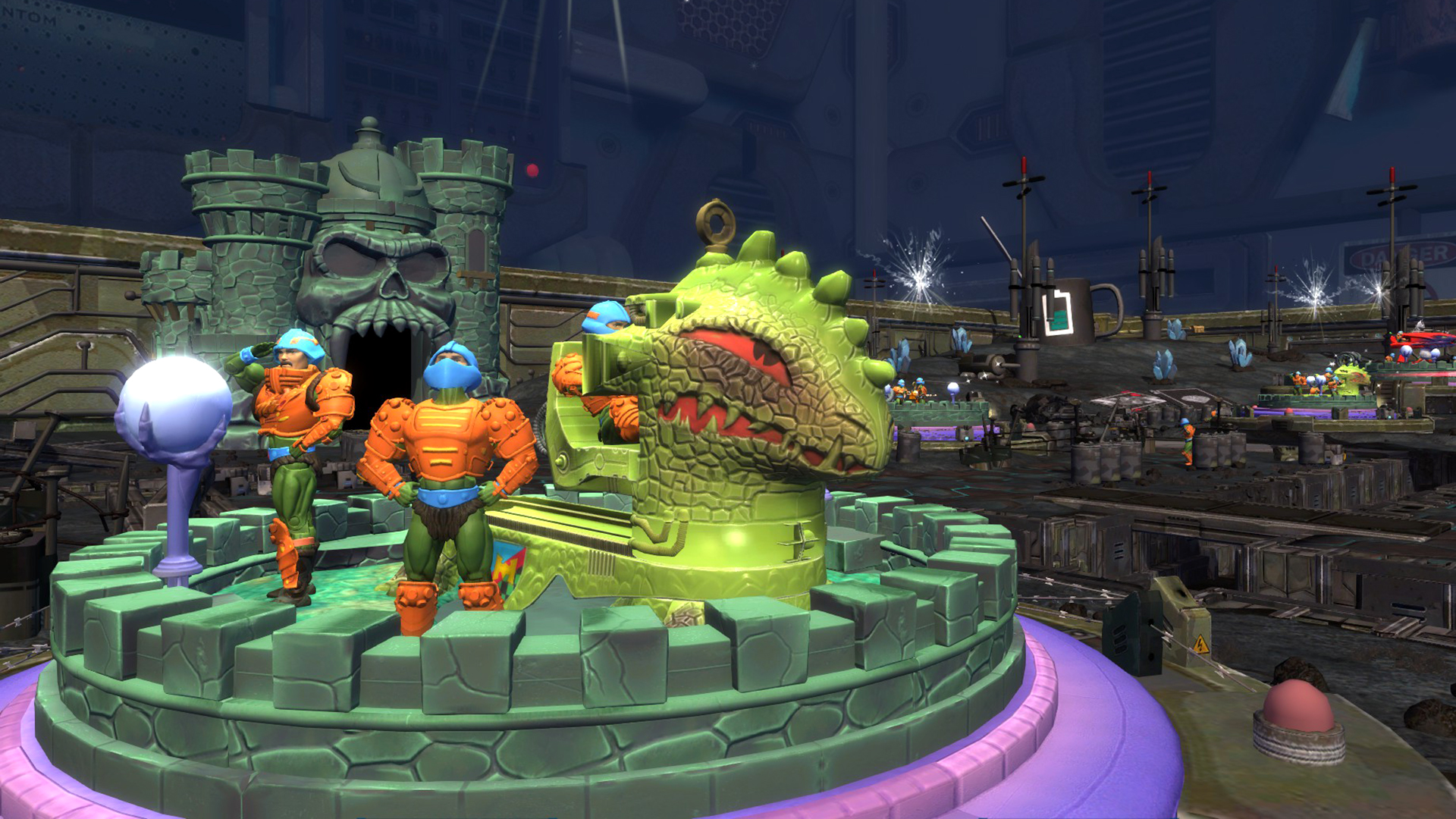It feels like every form of media consumption these days - from TV shows and movies, to video games and even music - has taken a turn to harken back to the days when I was a kid. Sure, my demographic is the primary consumer of goods these days, but I can’t help but feel the shadowy hand of pandering in the attempts to sell me something simply because it plays upon some childhood memory. Such is the case with Toy Soldiers: War Chest.
Toy Soldiers: War Chest offers little variation from previous entries where the gameplay is concerned. Throughout the title’s 12 campaign missions, your primary goal will be to protect your army’s toy box by building turrets, upgrading and repairing them, and occasionally taking control of them to ensure maximum slaughter of the opposing forces. Each army has their own version of the four basic turrets - anti-infantry, anti-armor, anti- air, and artillery - with their own particular upgrades that affect a turret’s range, damage, and health. The Cobra anti-infantry turret, for instance, gets an anti-armor missile as its third damage upgrade while the Phantom turret gets an automated defense drone that will shoot at passing soldiers (useful while you’re reloading). These slight differences help give each army their own strategies and tactics, to some degree, though they largely get lost among the tedium of each level.
Upgrades to the various turrets can be acquired via purchasing toy boxes (using in-game money earned for completing levels) that contain random upgrades parts or by buying the upgrades directly. There’s a weird microtransaction element built into this game where you can pay to buy some amount of in-game currency in order to acquire these boxes and/or upgrades quicker, but boxes are also earned when you level up your army’s hero (i.e., the Darklord, He-Man, Cobra Commander, etc) and you’ll certainly earn enough in-game currency by playing through the game’s campaign. Though that is not the easiest task to undertake; not due to difficulty, but due to a rapidly waning interest in finishing.

To be fair, for a tower defense game, the campaign missions offer up some occasionally interesting scenarios. In one of the levels you start with only one spot where you can build a turret and a tank. If you commander the tank, you can start whittling away at the enemy turrets (and forces) so you can eventually build your own emplacements, or you can blast away using your one turret. The latter takes much longer but is potentially safer as you have a limited time in the tank and once that gets used up or the tank is destroyed, you have to wait three minutes until you can use it again.
When I was first faced with this level I thought the game finally was doing something new-ish with the usual tower defense setup. However, once I cleared away a couple enemy emplacements, it was back to the usual “build a turret here, upgrade, fight off the waves” routine. There is so much that Signal Studios could have done with some of these levels if they doubled down on the initial setup/scenario in which you find yourself and reduced the number of waves you face (as any level tends to drag when you’re on wave 14 of 28). That drag really starts to set in around the fifth level and just grows exponentially from there.
The lack of any real innovation from what’s been done previously with these games is my biggest issue with this title. Once the initial shock/surprise of the scenario in which you’re placed wears off, you’re doing the same things over and over again. Build turret, hop in turret to kill enemies because it’s faster, upgrade turret, build different turret to counter latest wave, rinse, repeat. In the original release of the game, that move was something that felt innovative to the genre. It gave you something more active to do while waiting for the creeps to advance within killing range. On its third go, it feels like a tired and trite part of the genre.
